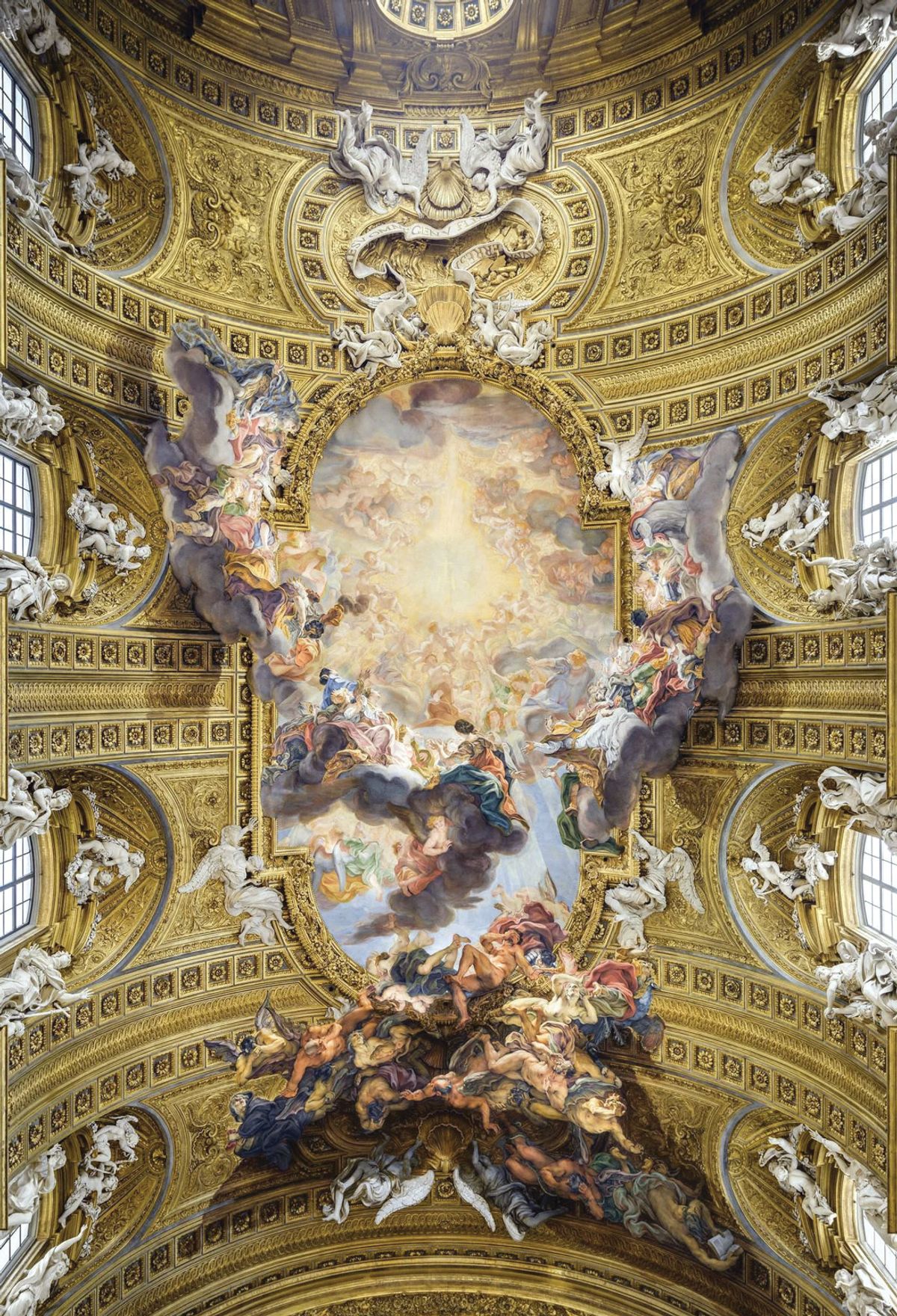Covid has stopped, interrupted and curtailed many cultural events worldwide over the past 18 months, and those marking the 700th anniversary of Dante’s death this year have been among the killed or wounded in action. There was, however (in the Anglosphere) the publication last year of the magisterial magnum opus, Dante (Princeton University Press), by England’s greatest living Dantist, John Took. The book under review by Martin Kemp, who needs no introduction to readers of The Art Newspaper, also makes a brave contribution.
Kemp’s idea is to set up a paragone, comparing, on the one hand, Dante’s scientific and metaphorical/theological understanding of light and sight in the Divine Comedy (1308–21), especially in Paradiso, to, on the other, renderings of divine light in Italian Renaissance and Baroque painting. He opens with a scholarly survey of late medieval natural science accounts of optics and of light (noting in particular the widely accepted theories of the late 10th-/early 11th-century mathematician Ibn al-Haytham, known as Alhazan), before laying out what he understands of Dante’s knowledge of, and interest in, this topic, which he terms the poet’s “dazzle”—the failure of sight when confronted with the splendore (blinding light) of Empyrean Heaven.
Kemp is insistent that it is Dante’s divine light that appears in all the works he cites
In the next chapter, Kemp examines four illuminated manuscripts of the Comedy, with special praise for Botticelli’s drawings from the 1490s (on which the art historian Bernard Berenson looked down his nose), and the 1544 Marcolini printed book with woodcut pictures. From these earliest attempts to the present day, artists have consistently run out of ideas for Dante’s description of the indescribable in the Paradiso, an observation that might have given Kemp pause. Strangely, Kemp does not mention the golden “divine” light of heavenly scenes in Ravenna’s sixth-century mosaics as a possible source of Dante’s luminosity (long pre-dating the late medieval theories), a notable omission or oversight as it was in Ravenna that Dante wrote most of the Comedy.
The next two chapters pit the vision of God in the Paradiso against artists’ works, first by Italian Renaissance painters from Giotto to Titian (with the improbable inclusion, even on Kemp’s own admission, of Grünewald), then by artists of the mostly Roman Baroque—Lanfranco, Pietro da Cortona, Gaulli (“Il Baciccio”), Bernini, Andrea dal Pozzo and Rubens—who each created vast vault, dome and ceiling paintings of the heavenly host. Correggio is posited as the only begetter of these illusionary heavenly enterprises in paint, but Kemp does not mention the commonplace, current from the late Middle Ages to the end of the 17th century, that electrum—a silver-gold alloy—was reckoned to be the colour best suited to signify the light of heaven.
Kemp then takes the reader on a detour (touched on briefly in his exposition of Pietro da Cortona) of the relationship between para-liturgical and theatrical light-filled ephemeral constructions (for the Quarant’ore and courtly wedding feste). He links these, via a string of minor late 16th-century Roman dome and ceiling painters, to the major Baroque illusionist artists of the previous chapter, the hinge being Federico Zuccari, both a Florentine artist and the first director of the Roman art academy, whom Kemp believes is a link between great the Florentine poet and Roman painting.
Kemp ends with a dialogue on the question “Are there absolute limits to what we can ever hope to know?” He invokes Heisenberg and Gödel for the Moderns, and Robert Grosseteste, Albertus Magnus, Aquinas and Nicholas of Cusa for the Ancients, to answer in the affirmative: it is not possible, in words or pictures, to come anywhere near expressing the ineffable, invisible, indescribable, transcendent reality of God; natural light or its painted imitation is as good as it gets. Kemp concludes limply that creativity begins where knowledge ends.
Kemp makes periodic disclaimers throughout the book that it is impossible to cite documented or obvious connections between Dante’s light and works of art (except for illuminated or illustrated editions of the Commedia) but, to avoid cutting the ground from under his own feet, he makes a Roger-Fry swerve: the viewer will need a special sensitivity to see the “Dantesque” as Kemp does. “The more general and less discernible diaspora [of Dante’s divine light] is something that can be sensed as a common factor as we pass from one scheme of decoration to another. This is not a matter of firm historical demonstration so much as the deployment of visual and poetic instinct.” Kemp is insistent, pounding away with Maslow’s hammer throughout, that it is Dante’s divine light that appears in all the works he cites. It must be said that, in the paragone he proposes, it is not a question of attributable sources that is the problem; it is the category failure of comparing poetry with painting, apples with pears. Ultimately, Dante himself says that the only possible answer to “Who does divine light best?” has to be God Himself, lux eterna.
Martin Kemp, Visions of Heaven: Dante and the Art of Divine Light, Lund Humphries, 240pp, £45 (hb)
• Donald Lee is retiring as Literary Editor of The Art Newspaper after 25 years


